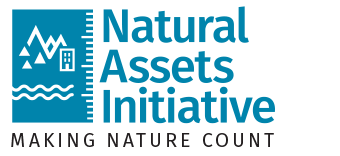Where are they now? Major flooding challenges lead to a move to include nature-based solutions in Grand Forks, BC.
Third in a series of posts on activities of 5 original community pilots since completing
formal involvement with MNAI in December 2017.
The starting place:
As an early MNAI pilot, the City of Grand Forks, BC initially planned to assess the role of wetlands in stormwater management, but massive floods in 2017 and 2018 forced a change in plans.
Given the literally and figuratively changing landscape, the City of Grand Forks and MNAI, decided to assess flood mitigation benefits from the Kettle River Floodplain under different development scenarios. The results demonstrated that the Kettle River floodplain provides – at a minimum – between $500 and $3,500/hectare in flood damage reduction for downtown buildings in the City of Grand Forks during high flow events.
By the end of 2017, these results were seen as the foundation for further analysis and action including:
- Incorporating the results of modelling natural floodplain function, trade-offs with development, and floodplain protection options in anticipated regional floodplain mapping and hazards assessments;
- Updating development permit requirements for protecting sensitive ecosystems and limiting development (including land clearing) on natural hazard lands; and,
- providing and input into an Official Community Plan (OCP) update that will support implementation of the City’s new Sensitive Ecosystem Inventory and a 2018-19 floodplain mapping and risk assessment project.
Natural assets solutions now figure prominently in a $49.9M disaster mitigation funding application from the City to the federal government. If the application is successful this will help sustain efforts to imbed natural assets in asset management processes and financial plans.
The original MNAI project has made natural assets a mainstream part of the discussion and decision-making. The challenge now is to sustain that momentum and translate it into operational asset management changes
-Graham Watt, City of Grand Forks
Since MNAI
According to City staff, the MNAI pilot created an understanding of the function and value of natural assets, and how the community relates to ecosystems. This created momentum for additional projects and activities as the City builds back from the floods including:
- completing a Sensitive Ecosystem Inventory. The results, including prioritized habitat areas, are currently in the queue for incorporation into the OCP update;
- developing a hazard risk assessment and floodplain mapping; the City has received funding for LiDAR and modelling from the Union of BC Municipalities for this, and it should be complete this year. The results will be reflected in a community plan update, and incorporated in new floodplain bylaws and development permitting; and,
- Expanding the scope of the floodplain risk assessment to look at community risk as a function of slope, geomorphic hazards, water velocity and other variables normally not used in floodplain bylaws.
The City has also started reconceptualizing flood damage. In the original MNAI project, damage was understood to mean downstream flood damage, primarily to buildings. Now, the City is considering whether and how to move infrastructure in the floodplain – not to avoid downstream flooding, but because the floodplain itself poses risks. Thus, through a process of reducing encroachment, both upstream and downstream risk can be reduced.
Looking Ahead
The City of Grand Forks is focused on building back better to reduce future flooding risk. At this point, there is strong momentum for understanding and acting on the role of natural assets within this process.
One result in that in January 2019, the City applied for $49.9 million in funding for flood infrastructure from the Federal Disaster Mitigation and Adaptation Fund (DMAF) program. Their goal is to protect both residential neighbourhoods and vulnerable areas in the downtown core, and as part of this, to recreate wetland areas and re-establish floodplain in high risk areas, including through land acquisition and removing infrastructure from vulnerable area. More details are here.
The original MNAI project has made natural assets a mainstream part of the discussion and decision-making. The challenge now is to sustain that momentum and translate it into operational asset management changes
-Graham Watt, City of Grand Forks
To maintain momentum the City must also continue to move from analysis and planning, to widespread and sustained changes in management of natural assets, including:
- integrating natural assets into the City’s overall asset management program.
- Long-term efforts to remove vulnerable areas from harm, and having healthy, intact floodplains in their place
Drivers for this could include, according to City staff, additional direction from the Public Sector Accounting Board. For example, lifecycle budgeting for the replacement of capital assets in general was brought on by change to PSAB guideline 3150; the same sort of approach could be brought about by the Board for natural assets also. [See a full discussion on PSAB and natural assets here].
Challenges for natural asset management in the City:
The most pressing challenge to the future of natural asset management in Grand Forks is sustaining the expertise for, and focus on, natural assets until it is embedded fully into asset management processes and financial plans.
Stated differently, recognizing the importance of natural assets in flood mitigation at the level of strategy and principle does not automatically translate into programme-level action and corresponding budgets without further effort and impetus.



